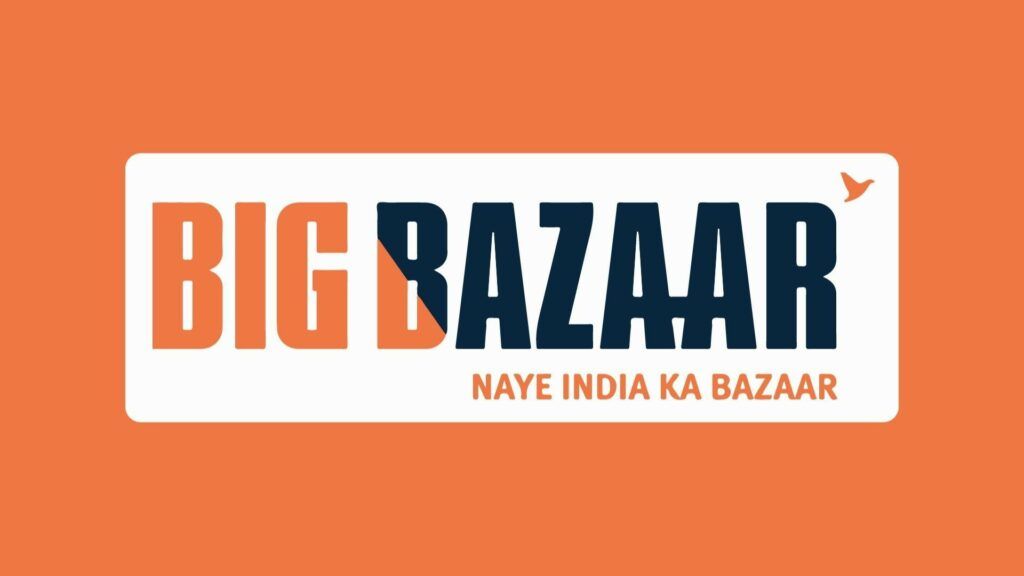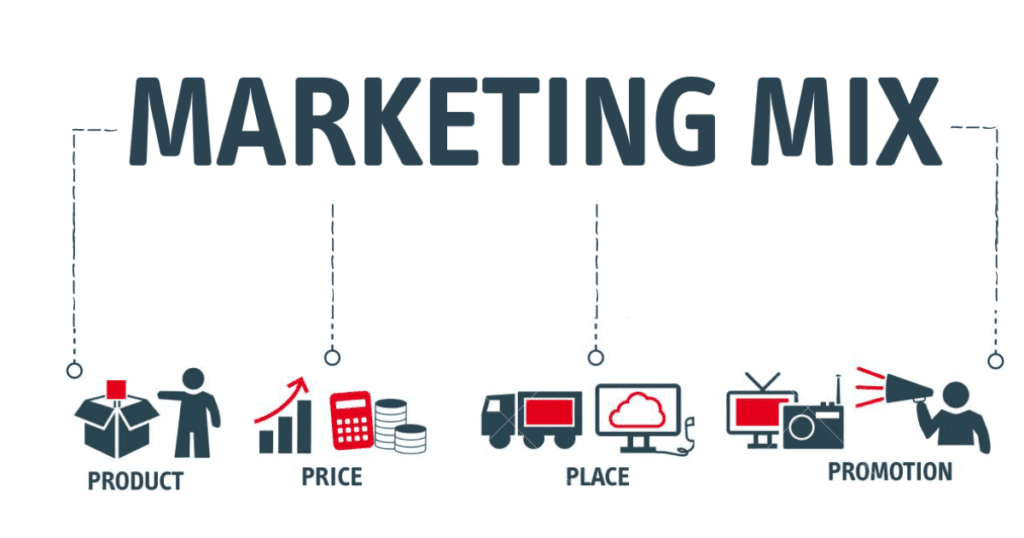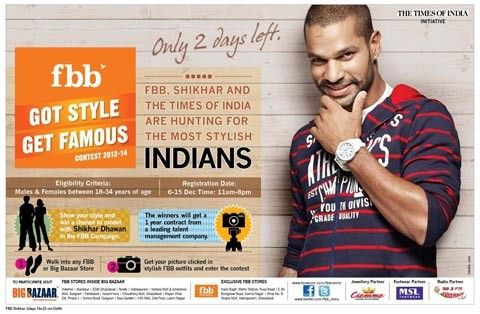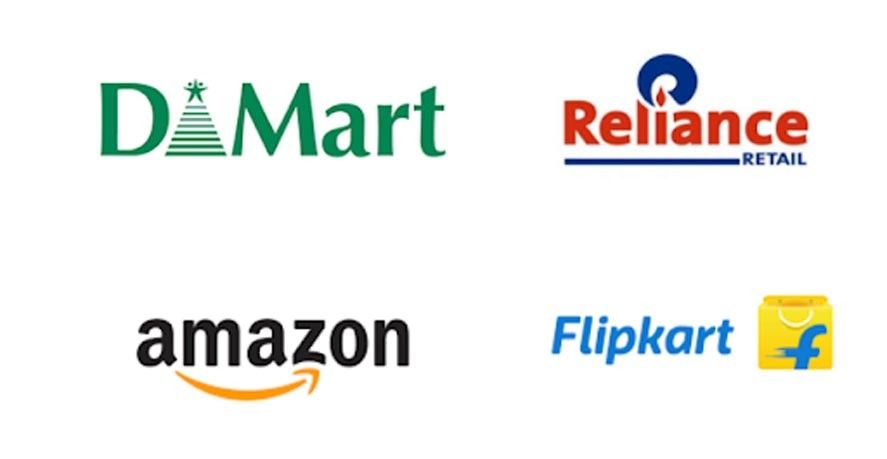
Updated on Aug 9, 2025
Share on:
Everybody knows Big Bazaar – the supermarket that has everything! But does anyone know why the business model of Big Bazaar is so successful?
Be it clothes, daily essentials or groceries – Big Bazaar has it all! Big Bazaar is India’s second-biggest hypermarket retail chain. Its success story is an inspirational one.
So what made Big Bazaar profitable over the last 20 years? In this case study, we will take a look at the marketing mix of Big Bazaar, marketing strategies of Big Bazaar and marketing advertisements & campaigns of Big Bazaar, the online presence of Big Bazaar and Big Bazaar’s competitor’s analysis.
Let us now jump straight into the Business Model of Big Bazaar.
About Big Bazaar

Big Bazaar is a retail chain of hypermarkets and department stores founded by Kishore Biyani in 2001 under the parent organization Future Group. With a steady growth curve in the last two decades, Big Bazaar has established many verticals under its brand like Food Bazaar, Fashion at Big Bazaar (short for fbb) and eZone.
Believed by many to be the Indian version of Walmart, Big Bazaar was inspired by a family business of a local store called ‘Saravana’ and based on the philosophy: “low margin, high turnover.” This principle also inspired their famous slogan “Isse sasta aur accha kahin nahi” – claiming that nowhere else would a customer find a product at a cheaper rate or that of better quality.
Now let us dive deeper into the marketing strategies of the business model of Big Bazaar.
Marketing Mix of Big Bazaar

Marketing mix refers to actions or tactics that a company uses to promote its brand or product in the market to the right people at the right time. The model focuses on the 4P’s of marketing: Product, Price, Place and Promotion which forms the conceptual core of an overall marketing strategy.
So let us go through the marketing mix model of Big Bazaar in detail and look at the parameters one by one in the coming section.
-
Product Strategy of Big Bazaar
Big Bazaar offers a wide variety of products under one roof, ranging from apparel, food, fresh produce, toys, furniture, and essentials. This allows Big Bazaar to expand its customer base and recover any losses from one product category with the benefits from another product category.
Big Bazaar sells a variety of products under its name through brand names such as Tasty Treat, Clean Mate, DJ & C, etc.
-
Price Strategy of Big Bazaar
Big Bazaar promises its consumers high-quality products at low prices. Moreover, it offers discounts all year round and creates special sales and campaigns during festivals (Durga Puja, Diwali, etc) to encourage bulk buying.
Big Bazaar conducts sale days at least 4 times a year and has incorporated the E-Wallet Future Pay which acts like a customer loyalty program through which customers can earn and redeem points at any of the Future Group stores.
Big Bazaar also uses bundling tactics by offering products at a discounted rate when bought in combos to generate sales.
-
Place Strategy of Big Bazaar
Big Bazaar’s presence in different geographic locations has ensured easy accessibility and reach to their target market. Big Bazaar aims at starting departmental stores in developing areas besides investing in the metropolitan cities to have a head start against their competitors. Big Bazaar generally targets key semi-urban areas.
With a strong market hold offline in tier 1 and tier 2 cities (before the pandemic), Big Bazaar is looking to expand its customer base online and gain momentum in e-commerce transactions.
-
Promotion Strategy of Big Bazaar
With huge budgets, the promotional strategy of Big Bazaar is to promote itself to create brand awareness targeted to building an image for low-cost shopping options. The company opts for print and advertising media to promote itself in the form of newspaper ads, magazines, billboards, TV commercials or radio.
Big Bazaar leverages social media campaigns as its main channel for online marketing and e-commerce. It has tie-ups with various E-Wallets (PhonePe, GooglePay, Paytm) to offer additional discounts and cashback to its loyal customers.
For increasing brand loyalty, value-added cards and coupons are given to consumers.
This is how Big Bazaar maintains its position as a market leader with affordable products while ensuring accessibility and quality. This is visible in the marketing strategy of Big Bazaar, let’s take a deeper look at that.
Marketing Strategies and Marketing Campaigns of Big Bazaar
Successful retail stores such as Big Bazaar can predict market trends and can help develop products and services to sustain those trends using campaigns and marketing strategies to meet the expected needs and demands of the customers.
Most of the campaigns or advertising strategy of Big Bazaar has been around the theme of offering products for less than the Maximum Retail Price (MRP).
Some of the marketing campaigns of Big Bazaar and marketing strategies of Big Bazaar are mentioned below:
-
Wednesday Bazaar – “Hafte ka sabse sasta din”
Discounts are offered all year round at Big Bazaar but every Wednesday, special discounts are offered on categories like apparel, food, toys or electronics to acquire more walk-in customers on weekdays.
-
The Great Exchange Offer – “junk swap”
The Great Exchange Offer campaign is a “junk swap” wherein customers can exchange any old and broken items (junk) and get new products at a discounted price from Big Bazaar – quite in tune with the Indian mindset of getting value even for junk.
-
Influencer Marketing

Big Bazaar brought in various celebrities to endorse their brands. These celebrities included cricketers like M.S. Dhoni and Shikhar Dhawan, actors & actresses like Varun Dhawan, Sakshi Tanwar, Asin and Katrina Kaif. The aim was to boost sales from fan-following and increase brand appreciation and perception.
Marketing strategies in Big Bazaar help increase the footfall of the store. Customers are attracted to discounts, schemes & sales. Various product lines also give the customers options to choose from.
Online Presence of Big Bazaar
With about 65% of India’s population shopping online for clothes, essentials and food, the “offline-to-online” project was a long time coming for Big Bazaar. Big Bazaar launched its mobile application to facilitate online shopping from local stores in August 2018 and has built its online presence leaning on various social media platforms (Facebook, Instagram, Twitter).
The unprecedented lockdowns due to the Covid-19 pandemic and travel restrictions further pushed their cause for home deliveries as consumer preferences and market needs have changed drastically in the last 18 months.
Today, Big Bazaar competes with other e-retailers like Amazon, Grofers and Big Basket in the “home delivery in two hours” segment and has extended this service in more than 100 cities.
While delivery of non-essential retail products through online channels was not permitted in many places during the lockdown period, Big Bazaar, like most online platforms and marketplaces has kicked off discounts and offers and advanced their sale periods in various product categories to tap the Un-lockdown momentum.
Competitors’ Analysis of Big Bazaar

The Indian retail industry is a fast-growing segment in the digital world. The Covid-19 pandemic has only pushed the envelope further. The most popular and well-known names in the Retail market that Big Bazaar is competing against include DMart, Grofers, BigBasket, Amazon, Reliance Mart.
Big Bazaar is a well-established Reliance Industries Limited & Amazon India are going head to head in acquiring the Future Group (The company that runs Big Bazaar and its sister stores in India) in a legal context.
The following are some of the reasons why Big Bazaar is more popular than any other supermarket chain in India:
- In comparison to its competitors, Big Bazaar has a higher brand loyalty due to its entry before any other supermarket chain in the Indian subcontinent – it was the first of its kind on such a grand level.
- The quality of the products sold in Big Bazaar is higher. Brands of Big Bazaar add value to the purchasing items.
- Big Bazaar engages in a ‘family shopping’ experience’ i.e., shopping for all age groups under one roof.
- Big Bazaar has departmental stores located in malls which increases their footfall significantly in comparison to its competitors that have just stand-alone independent stores.
- Resources from the Retail Industry say that while the competitors of Big Bazaar complete 3,00,000 to 5,00,000 orders daily, the order value per transaction is lower (₹500-₹600) when compared to that of the Big Bazaar shoppers who spend almost twice that amount (₹1000-₹1200).
- According to the reports and projections, there is a chance of the growth rate increasing by 9% in the year 2021.
With that being said, this case study on the Business Model of Big Bazaar comes to an end.


Learn Digital Marketing for FREE


Conclusion
To conclude, as of today, Big Bazaar has 290+ stores in India in over 130 cities. Sister chains of Big Bazaar include Brand Factory, Home Town, Central. Big Bazaar is now eyeing small towns to gain an edge over its competitors. The retailer believes that the future is going to be an incorporation of both channels of selling their products: walk-in stores and home delivery or online purchasing. Big Bazaar’s current tagline aptly suggests the same: “Naye India Ka Bazaar” – “Market for New India”. Big Bazaar is now focusing predominantly on generating e-commerce revenue and building creative marketing strategies.
To learn more about digital marketing strategies and digital marketing courses online, check out IIDE, India’s leading digital education institute. Also, you can check out our Free Digital Marketing Masterclass by Karan Shah.
Hope you liked reading about the business model of Big Bazaar. Let us know your thoughts in the comments section below and if you liked our blog, do share it in your circles.
Looking forward to seeing you on the next case study. Until next time!
Want to Know Why 2,50,000+ Students Trust Us?
Dive into the numbers that make us the #1 choice for career success

MBA - Level
Post Graduate in Digital Marketing & Strategy
Best For
Fresh Graduates
Mode of Learning
On Campus (Mumbai & Delhi)
Starts from
Jan 5, 2026
Duration
11 Months
Live & Online
Advanced Online Digital Marketing Course
Best For
Working Professionals
Mode of Learning
Online
Starts from
Jan 5, 2026
Duration
4-6 Months

Online
Professional Certification in AI Strategy
Best For
AI Enthusiasts
Mode of Learning
Online
Duration
5 Months

Offline
Undergraduate Program in Digital Business & Entrepreneurship
Best For
12th Passouts
Mode of Learning
On Campus (Mumbai)
Duration
3 Years
Recent Post
Aditya Shastri leads the Business Development segment at IIDE and is a seasoned Content Marketing expert. With over a decade of experience, Aditya has trained more than 20,000 students and professionals in digital marketing, collaborating with prestigious institutions and corporations such as Jet Airways, Godrej Professionals, Pfizer, Mahindra Group, Publicis Worldwide, and many others. His ability to simplify complex marketing concepts, combined with his engaging teaching style, has earned him widespread admiration from students and professionals alike.
Aditya has spearheaded IIDE’s B2B growth, forging partnerships with over 40 higher education institutions across India to upskill students in digital marketing and business skills. As a visiting faculty member at top institutions like IIT Bhilai, Mithibai College, Amity University, and SRCC, he continues to influence the next generation of marketers.
Apart from his marketing expertise, Aditya is also a spiritual speaker, often traveling internationally to share insights on spirituality. His unique blend of digital marketing proficiency and spiritual wisdom makes him a highly respected figure in both fields.